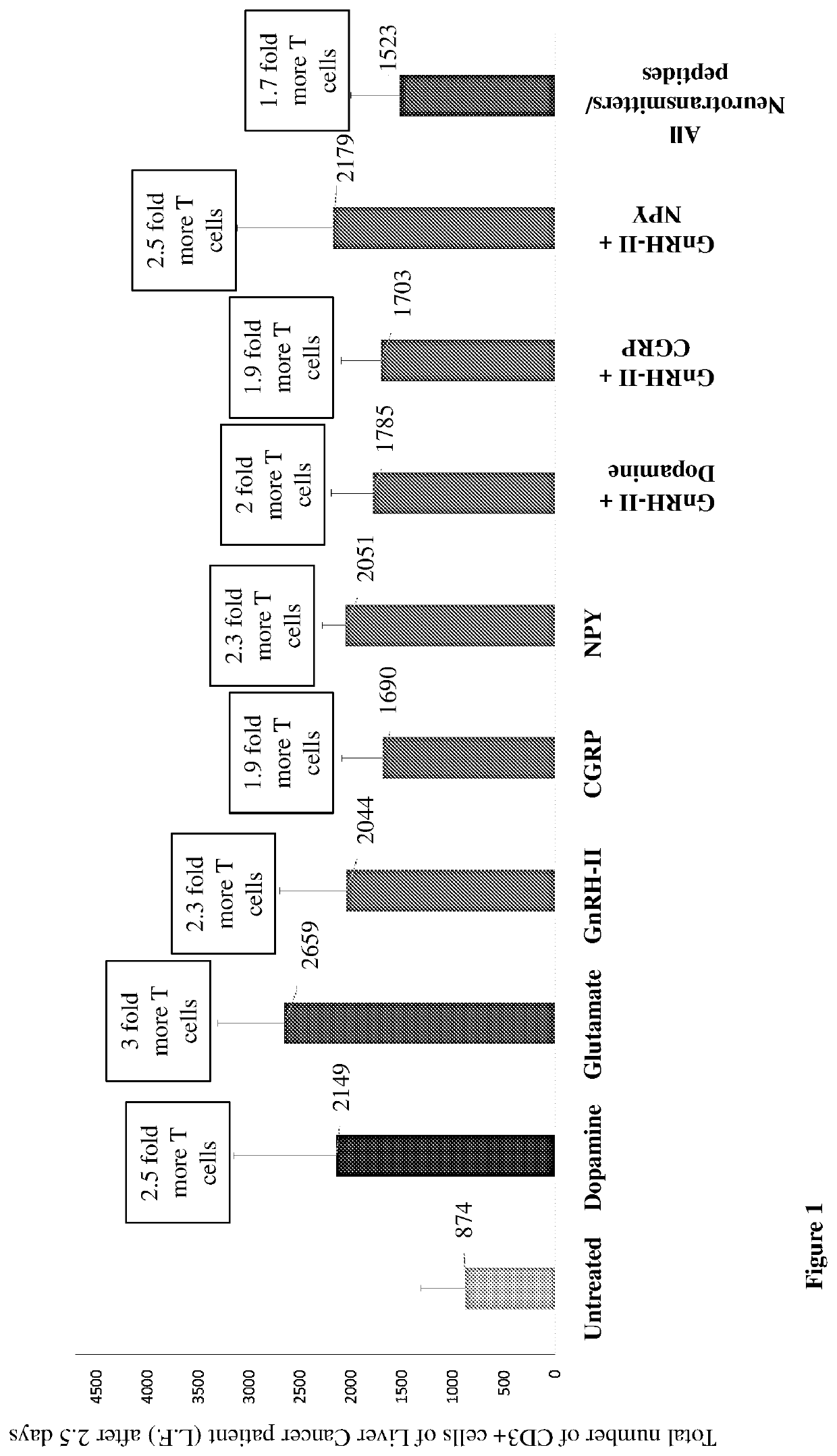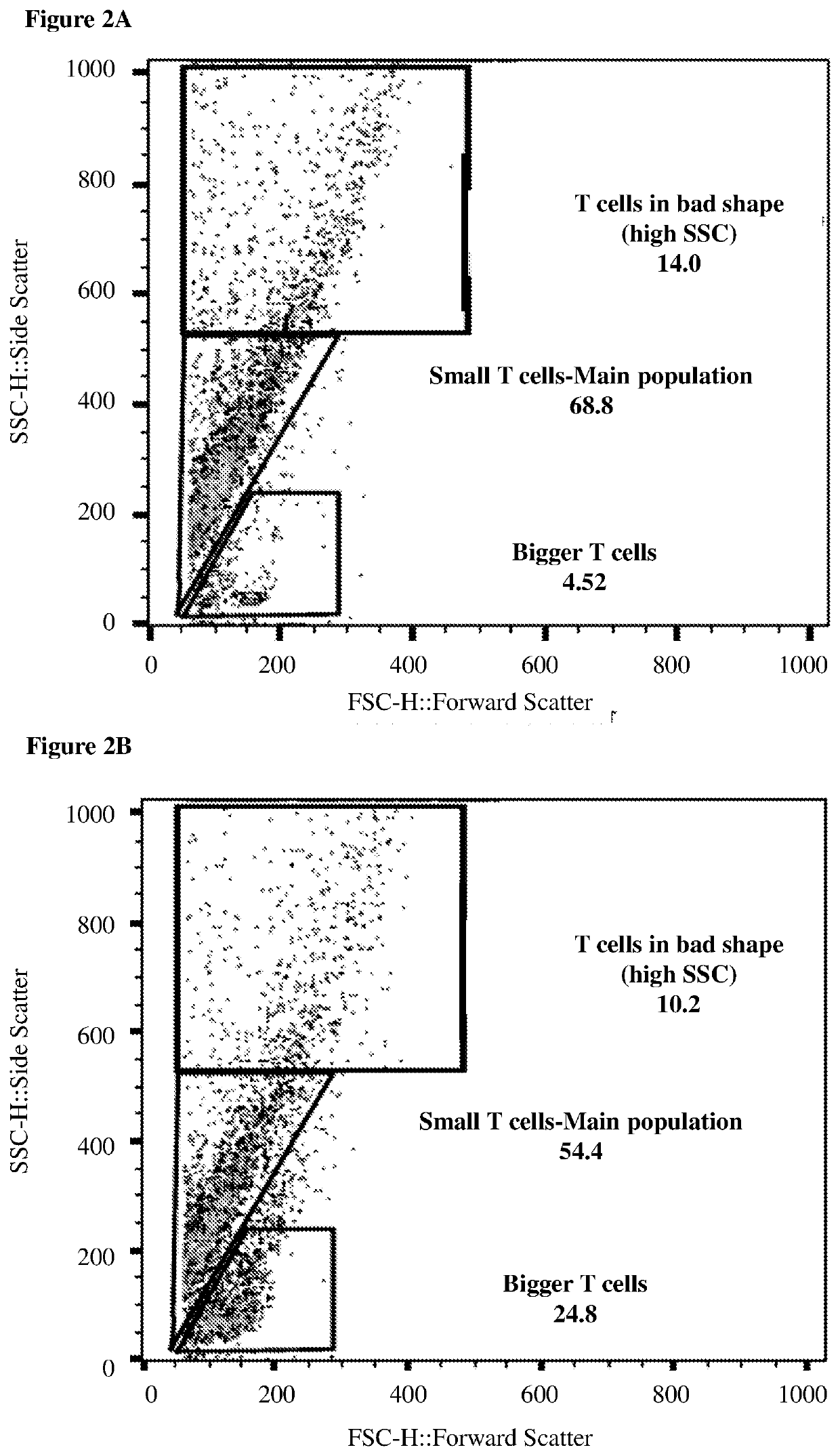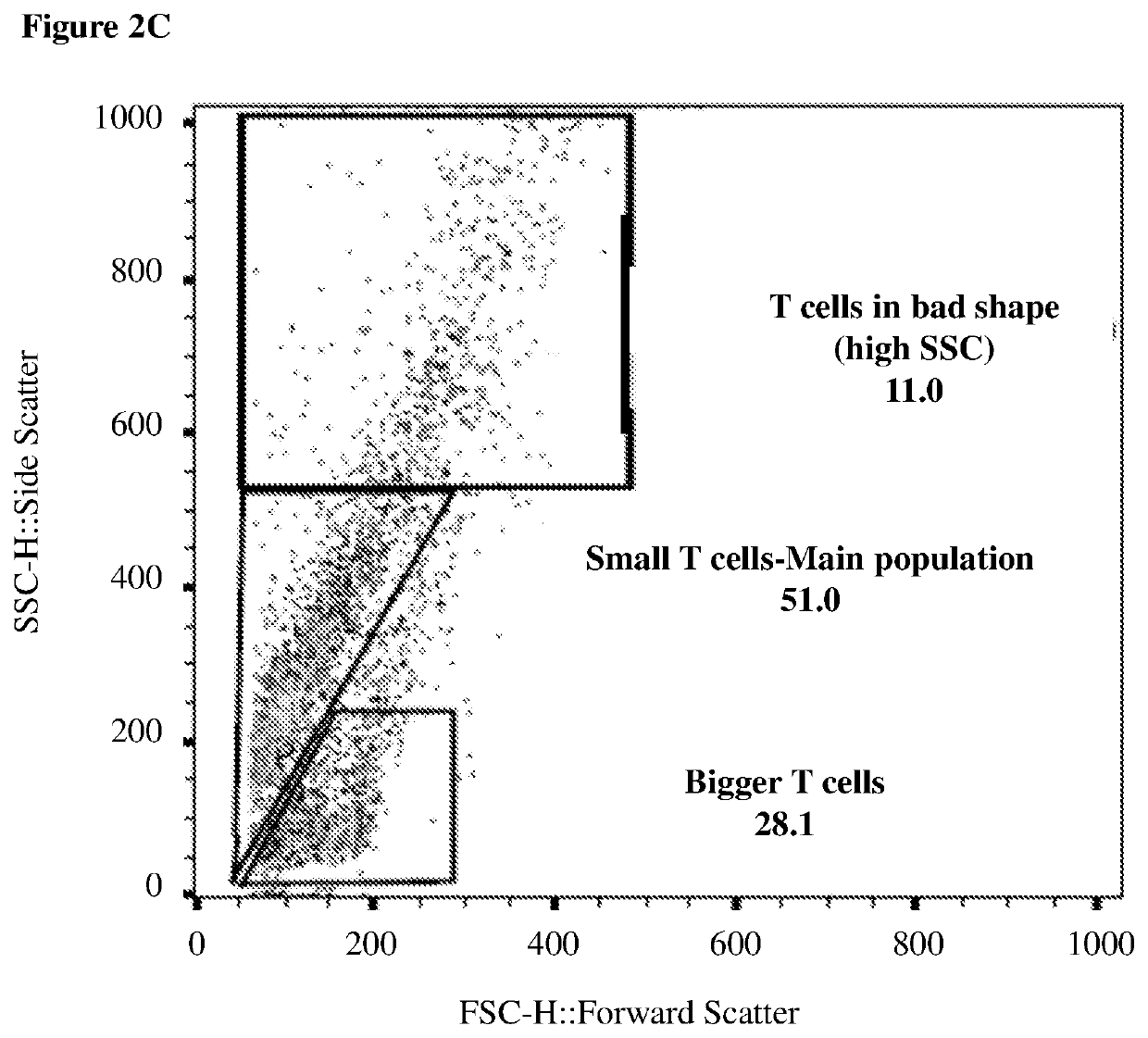Methods for improved immunotherapy
a technology of immunotherapy and immunomodulatory therapy, applied in the field of immunomodulatory therapy, can solve the problems of increasing the quantity/load of tumor-specific t cells, affecting the effect of tumor survival, and affecting the survival rate of patients, so as to improve the therapeutic effect, improve the ability to function beneficially, and reduce the expression of pd-1
- Summary
- Abstract
- Description
- Claims
- Application Information
AI Technical Summary
Benefits of technology
Problems solved by technology
Method used
Image
Examples
example 1
smitters Reduce PD-1 Expression in T Cells of Healthy Donors
[0392]Peripheral blood lymphocytes (PBLs) were separated from normal human leukocytes of healthy donors by Ficol separation and CD3 positive T cells were separated by anti-CD3 antibody-coupled magnetic beads. The CD3+ T cells were cultured in RPMI 1640 medium supplemented with 10% heat inactivated fetal calf serum (FCS), 1% L-Glutamine, 1% sodium pyruvate, 1% non-essential amino acids, and 1% antibiotics. The cells were usually maintained for, for on average 24 hours after their separation before various molecules were added and their effects on the T cells were measured. Many tumors are able to evade immune surveillance by expressing PD-1 ligand (PD-1L). PD-1L binds to PD-1 expressed on T cells and by so doing does not allow the T cells to become activated, functional, and attach the cancer cells. It was therefore tested if neurotransmitters, neuropeptides, and / or modulators of voltage-gated ion channels can reduce PD-1 on...
example 2
smitters, Neuropeptides, their Analogs and Combinations Thereof Reduce PD-1 is Both Large Proliferating and Small Non-Proliferating T Cells
[0393]CD3 positive T cells of patients are a heterogenous mix of different types of T cells. Flow cytometry analysis, even without any staining, shows the cell's size by a parameter called Forward Scatter (FSC), and the cell's granularity by a parameter called Side Scatter (SSC). Using this FCS and SSC analysis, T cells can be distinguished and separated by size into large proliferating T cells and smaller non-proliferating T cells. A larger portion of the smaller T cells were found to be PD-1 positive than the large proliferating T cells, and the effect of the neurotransmitter and neuropeptide was examined on the two populations separately. Table 4 summarizes the effects of a 1-hour treatment of large proliferating T cells with various molecules and combinations of molecules. Table 5 summarizes the effect of the same treatments on smaller non-pr...
example 3
smitters, Neuropeptides and Combinations Thereof Augment the Proliferation of CD3+ T Cells of Liver Cancer Patients
[0394]Having established the efficacy of neurotransmitters, neuropeptides, their analogs, Kv1.1 ion channel blockers and combinations thereof on reducing expression of PD-1 in normal human T cells of healthy subjects, and augmenting their proliferation, these molecules were tested on T cells of cancer patients. Blood was drawn from two patients suffering from liver cancer, patient L.F. and patient A.G. who both suffer from hepatocellular carcinoma. 15 mLs of blood yielded roughly 2.5×10{circumflex over ( )}7 peripheral blood leucocytes, from which approximately 6×10{circumflex over ( )}6 CD3 positive T cells were isolated. The cells were cultured as described above, and the effects of various molecules and their combinations on those T cells were examined.
[0395]Cell proliferation was monitored in culture for 60 hours after administration of the molecule / s (FIG. 1). All ...
PUM
| Property | Measurement | Unit |
|---|---|---|
| time | aaaaa | aaaaa |
| time | aaaaa | aaaaa |
| time | aaaaa | aaaaa |
Abstract
Description
Claims
Application Information
 Login to View More
Login to View More - R&D
- Intellectual Property
- Life Sciences
- Materials
- Tech Scout
- Unparalleled Data Quality
- Higher Quality Content
- 60% Fewer Hallucinations
Browse by: Latest US Patents, China's latest patents, Technical Efficacy Thesaurus, Application Domain, Technology Topic, Popular Technical Reports.
© 2025 PatSnap. All rights reserved.Legal|Privacy policy|Modern Slavery Act Transparency Statement|Sitemap|About US| Contact US: help@patsnap.com



